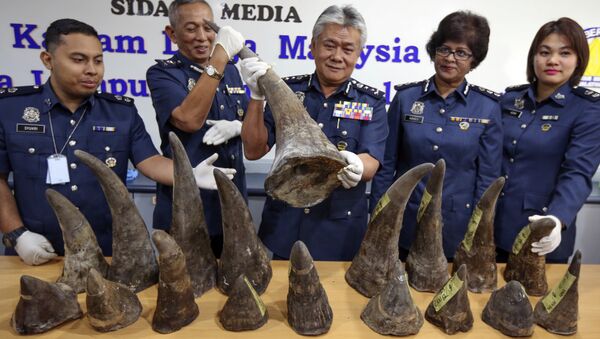The horns weigh 51.6 kilograms (113.7 pounds), according to Kuala Lumpur International Airport (KLIA) customs director Hamzah Sundang. They originated in Mozambique and were then flown to Qatar before arriving at KLIA on Friday.
The horns were declared art objects and had a fake final destination, says Hamzah. They were seized by custom officials based on an anonymous tip. No arrests have been made.
"The address of the consignee and the agent of the recipient didn't exist. All the documentation used for the shipment were false,"; said Hamzah in a statement.
Rhino horns are prized for their purported medicinal properties as a treatment for cancer, hangovers, and general ailments — but not as an aphrodisiac, as is commonly believed in the West. In places like Vietnam, rhino horns are seen as luxury currency and status symbols.
"People use rhino horn as gifts to trade for a better job or trade for some benefits," said retired Vietnamese government official Bui Thanh to NPR in 2013, who claims he uses the horns as a hangover cure.
Poaching has reduced their numbers from 900,000 at the turn of the 20th century to less than 30,000 today. Of the five rhino species, three are considered to be critically endangered.
The United Nations Convention on International Trade in Endangered Species of Wild Fauna and Flora (CITES) has repeatedly extended protections for rhinos, which are frequently killed for their valuable horns. CITES estimates that almost 6,000 rhinos were killed for their horns between 2005 and 2015, most of which were black rhinos in Southern Africa.
In nearby Thailand, an even larger haul of $5 million worth of rhino horns was seized in March. In that same month, additional seizures occurred in Hong Kong and Vietnam. Two of the Hong Kong seizure cases also involved horns from Mozambique.




